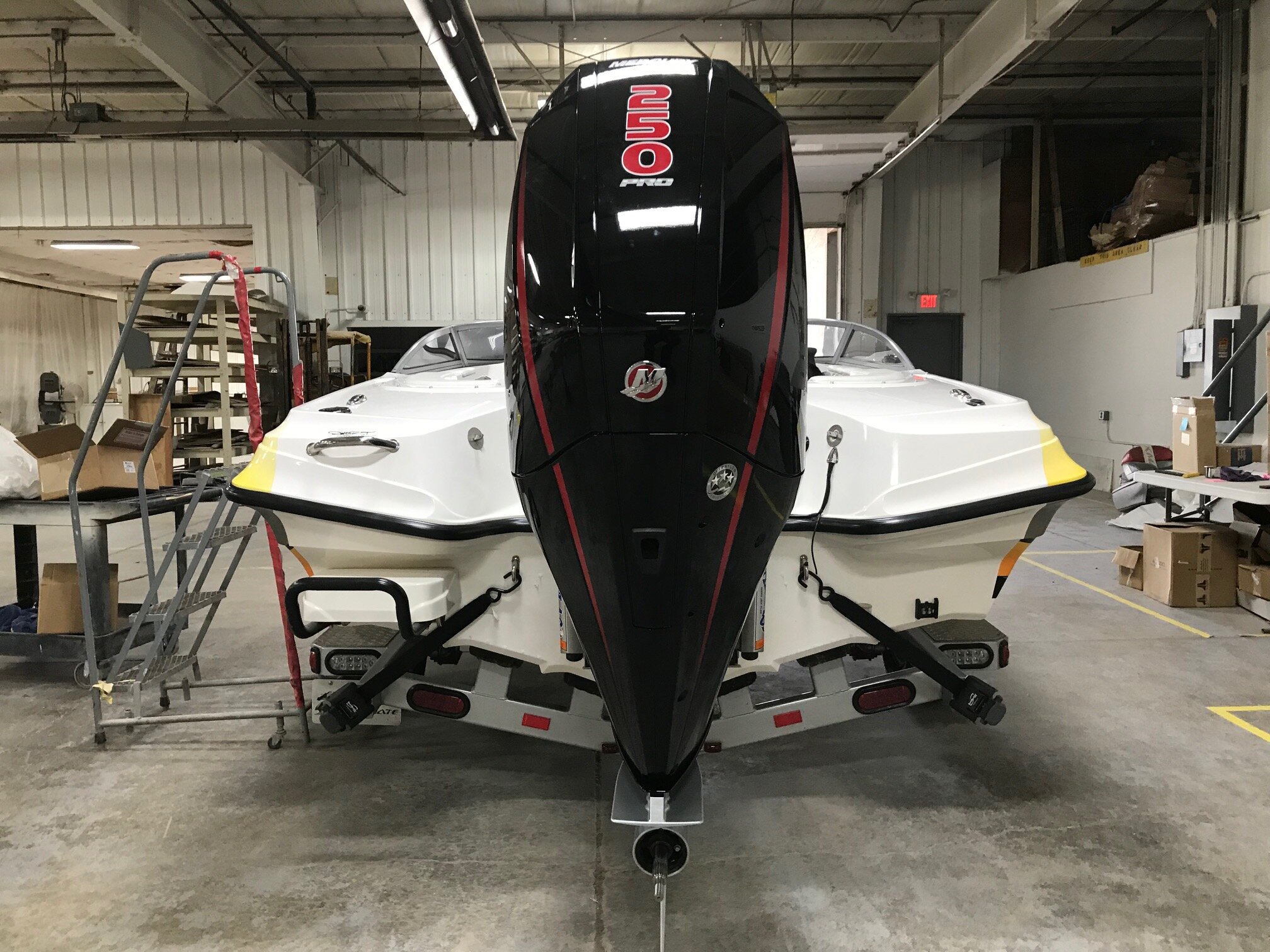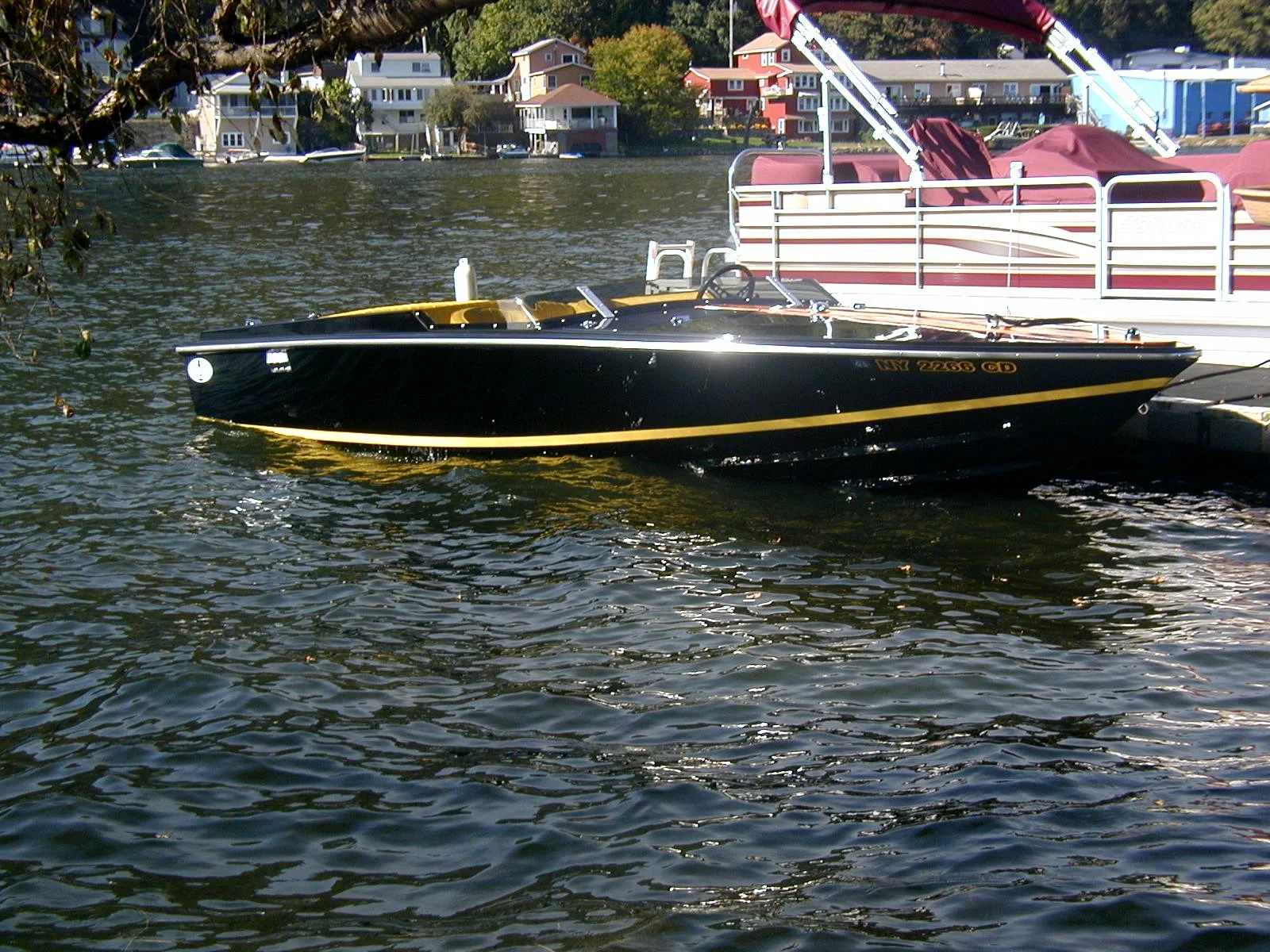The Ultimate 250 HP Setup: Outboard Hot Rods from Mercury and Yamaha
Whether you have a fast single engine V hull, a bass boat or even a performance bay boat, a 250 HP covers a lot of ground while being priced very well and the ability to upgrade with aftermarket parts. Right now, there are a few really good options in the 250 HP class. Mercury Racing owns the market on high performance engines and although the 300R is such an amazing package out of the box, the 250R is often overlooked, as well as it’s sibling the 250 ProXS. In the other corner, the Yamaha Vmax SHO 250 is a big seller and a really popular engine for all types of boats. The great thing about the 4.2 V6 platform from Yamaha is its proven mechanics and aftermarket parts availability. Let’s look at the 250 HPs from Merc and Yamaha and how best to set them up with the latest performance parts and options.
Yamaha 4.2 V6 250 SHO
When we are talking about taking a semi performance engine and setting it up to perform a little better we always want to look at the critical things first and to me that is the mounts and the steering. For the Yamaha V6, 200 to 250 SHO, there are aftermarket options available to really transform this big outboard. Hydro-Tec and Bob’s Machine offer solid mounts for the 4.2 and solid mounts are possibly the simplest and most beneficial upgrade you can make to your outboard. Right off the bat, you’re going to sharpen the handling and input of the steering by having solid mounts. This is critical on a performance boat. And they just last longer, soft mounts wear out quickly, solid ones last. Hydro-Tec offers Delrin mounts, which is an incredibly durable plastic, whereas Bob’s uses a solid aluminum. Bother are great and a huge improvement over stock.
Bob’s Machine offers these beautifully crafted solid mounts for the 4.2 Yamaha. (www.bobsmachine.com)
Since the Yamaha has a good gearcase from the factory, you might be fine using it stock, depending the boat you’re running and how fast it is. The good news is if you want to upgrade it beyond a nose cone, Hydro-Tec offers a prop shaft upgrade and an optional 1.62 gear ratio over the stock 1.75. This can really transform your Yamaha in the case of running the engine really high, which puts added strain on the shaft, and achieving really high speeds. Generally speaking, many boaters hit a wall if they are running a stock gearcase and this is because of the limit on how high you can run them. Running the gearcase at the optimum height, improves handling and increases speed by reducing drag.
Hydro Tec
The nose cone, along with a fat shaft kit help transform the Yamaha. www.hydrotecmarine.com
With solid mounts and a nose cone, you are well on your way to improving the performance of your setup. Those simple upgrades really put the Yamaha into the high performance category. The 250 HP class is always underrated with these engines often making around 270 actual HP at the prop. One benefit of these four strokes is that they can be tuned. If you really want that edge, you can go aftermarket with the ECU or even go all the way with a supercharger kit.
Nizpro Marine offers a really slick package utilizing an Eaton TVS R1900 supercharger and the kit includes everything you need to install, including a neat spacer to fit the compact unit under the cowl. And, the complete package weighs only 55 Lbs, turning the Yamaha into a 450 HP monster, with 425 lbs/ft of torque. Nizpro is an Australian company but has dealers in the USA.
The complete Nizpro Marine kit can be installed in a few hours. Turns the V6 Yamaha into a time machine. (nizpromarine.com)
If you’re not ready for that investment, an ECU upgrade can get you over 300 HP. Hydro-Tec claims 325 HP with their phase 1 kit which includes a blowout ring. That’s some serious power without much effort. A phase 1 will run you about $850.
Yamaha
From Yamaha’s bulletin, this stock Bullet 20 XRD did 89 MPH with a Turbo TXP-OT4 29” prop.
Mercury 250R / ProXS
The 4.6 V8 platform is relatively new and is quickly showing to be a really flexible engine for Mercury Outboards. For the 250 HP range there are multiple engines available; the Verado 250, Sea Pro, ProXS, Racing 250R, and standard four stroke, all based on the 4.6L V8. There are a few different features on each to differentiate. For our purposes, the only ones we will talk about are the ProXS and the 250R. To me, the 250R is a great deal if you must have the sportmaster gearcase and already have or want mechanical rigging. Racing made the 250R an economical repower option by taking a base mechanical 250 ProXS and adding the sportmaster. The Mercury 250 ProXS uses a 1.75 torquemaster, and is available with digital throttle and shift (DTS).
We featured this 250R repower on a classic Mirage and the results were incredible. Although the big four strokes are heavy, they make incredible power and torque across a broad RPM range. The SportMaster gearcase is a must above 85 MPH. This one can see 110 MPH.
I really like the V8 platform, in fact all the new Mercury four strokes are really competitive engines. If they made a high performance version of the V6, I think that would be a winner and probably outsell the 250 and 300R. That said, there are a few things to really like about the big 250 HP V8s from Merc. With 1.75 gears in both the sportmaster and torquemaster, and the ability for the Merc to rev to 6,200 RPM, you probably get the best stock setup out of the box. If you dipped into the Mercury Racing parts bin and put solid lower mounts from the 300R on, you’d be doing pretty well. I haven’t heard of anyone successfully tuning the new four stroke Mercury’s yet but I’m sure it has been done or is being looked at.
The 250 ProXS seems like a perfect match on so many 21’ boats like this Checkmate Pulsare. You could probably go with the R or the XS on this one, and be in the high 80s, possibly 90 MPH with the R.
If you’re running a ProXS, you get the advantage of DTS, really competitive pricing and a stock torquemaster is a great gearcase. You could cone it and with those mounts you’d have a really hot engine and have quite a few bucks in your jeans over a 300R, a few ponies short but these 250 Mercs are most likely pushing 270+ HP on a dyno.
Comparison: Yamaha vs Mercury
How does the big Yamaha compare to the Merc? These engines are very competitive. With the Mercury you get slightly newer technology, digital controls in the ProXS version and you get the option of different gearcases, both being really solid. Out of the box, I’d go Mercury. But, if your budget doesn’t allow for an engine as new as this, I would go Yamaha. With the Yamaha, you can find a good used or rebuilt one and make upgrades from there; building your own as you need.
Not many modern outboards have the aftermarket support Yamaha does so you are in good company with the big 4.2 V6. Plus, these Yamahas are proven, they have logged a lot of time on the water so you know what you’re getting into. It is important to note that both Mercury and Yamaha offer a 3 year warranty on these specific engines as of 2020.
The stock SHO 1.75 gearcase is pretty good and you have some great aftermarket options to upgrade.
If you have the budget, I’d go 250R on a boat that can go over 85 MPH, the 250R shares the tri-ram mid that the regular 300R has, so you could put the lower solid mounts from the 300R on it. A 250 ProXS with digital shift is really attractive too as it gives you the same power but with the added benefit of digital controls, and the torquemaster is great on boats doing under 85 MPH.
For the Yamaha, I’d go for the 250 SHO and add solid mounts, a nose cone and fat shaft upgrade. Hydro-Tec offers a kit with a heat treated stronger prop shaft, bearing carrier, seals, o-rings, and bearing. That’s an economical setup that can be run on many different boats. If you’re going to tune the ECU, any 4.2 SHO will do. If you’ve done the fat shaft and mounts, you can always get the ECU phase 1 later and push around 320+ HP. Hydro-Tec offers a phase 3 kit that includes all these upgrades; ECU, nose cone, HD prop shaft, blowout ring and solid mounts for $3,000. That’s what I’d go with. Depending on your setup, you can upgrade to 1.62 gears so you can stay within a reasonable propeller pitch range and improve overall performance.
Photo courtesy of Hydro-Tec. The fat shaft kit.
For the ultimate destroyer, you can get the complete supercharger kit from Nizpro, making 450 HP up to 6,200 RPM. And, both engines can have an aftermarket side mount steering system added.
Both platforms weigh about the same, stock gear ratio is the same, and The Mercury has slightly more displacement albeit with 2 more cylinders. This is one of those cases where - you can’t go wrong with either one. I like how these new four stroke platforms are seeing a revival of aftermarket upgrades. With the cult like following each brand has I don’t feel like too many switch once they choose but with the demise of Evinrude, I wonder who will pick up the new customers?
Here’s a rundown of the two platforms.
Yamaha 4.2L 60 degree V6, Vmax SHO
250 HP at 5,500 RPM, max RPM: 6,000
10.3:1 compression
1.75 gear ratio
20” and 25” shaft
Lightest weight: 505 Lbs.
Mercury 4.6L 64 degree V8 250 ProXS / R
1.75 gear ratio (torquemaster / sportmaster)
Max RPM: 6,200
Lightest weight: 505 Lbs / 520 Lbs (R version)














